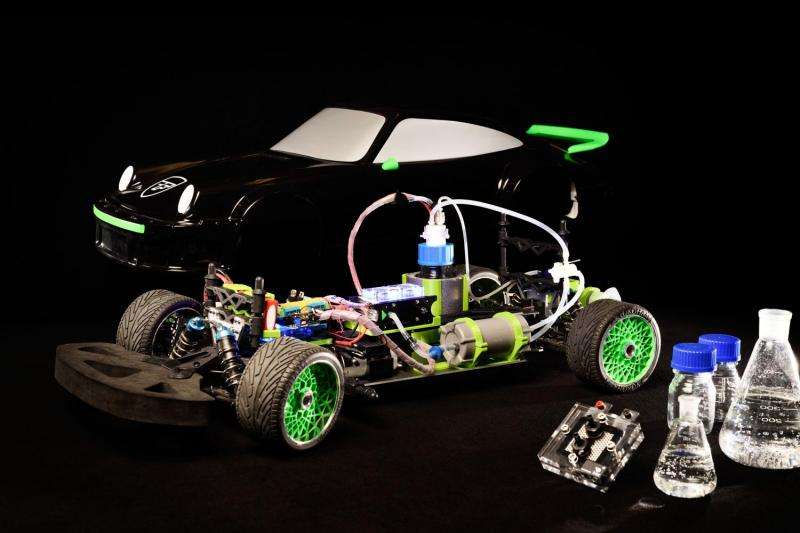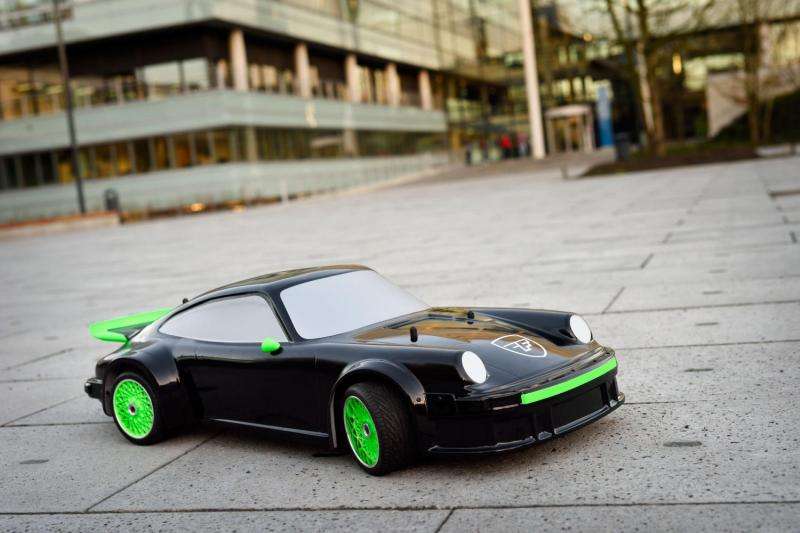The scale model of the Eindhoven student team that drives on formic acid. Credit: Bart van Overbeeke
Building a car that is powered by formic acid. That is the ambition of Team FAST, a new student team from Eindhoven University of Technology (TU/e). Since formic acid can store hydrogen, an environmentally-friendly fuel, it has more benefits than existing hydrogen or electric powered cars. Today the team presents the first concrete step: a scale model, a meter in size, which is able to drive on formic acid alone.
By using formic acid as a fuel, the TU/e student team Team FAST hopes to combine the strengths of electric and hydrogen powered cars without any of the drawbacks. Electric cars depend on batteries and thus have a limited range. An electric car can go further using hydrogen but the drawback here is that hydrogen is expensive to transport and store, and it also has to be transported under high pressure.
High speed
Formic acid - so called because ants (formica in Latin) and other insects can produce it - offers the possibility to store hydrogen easily. A chemical reaction, discovered last year by TU/e researchers, enables hydrogen and CO2 to be converted at high speed into formic acid, and vice versa. Due to the liquid nature of formic acid, hydrogen can be transported easily and cheaply.
Equivalent to gasoline
Team FAST sees possibilities for these reactions to take place in a car, whereby hydrogen is used to power an electric engine. For the consumer using formic acid will be like using gasoline. This similarity will also ensure that formic acid can easily be incorporated into the existing fuel infrastructure, Next to that, formic acid can be much more widely applied as an energy carrier; solar and wind energy can also be stored in formic acid, and then used when required.
The scale model of the Eindhoven student team that drives on formic acid. Credit: Bart van Overbeeke
First car to run on formic acid
In 2017 Team FAST wants to have built the world's first car powered by formic acid. They will do that by converting an existing hydrogen-powered car. Today the team presents the proof on a small scale: a scale model, a meter in size, which is able to drive on formic acid. Before the year is out they hope to demonstrate the concept in a bus.
Team FAST is a multidisciplinary team of 20 students. Their idea for a formic acid powered car won them one of the Eindhoven BRAINS awards for sustainability last year as well as a grant of 50,000 euros in the Dutch STW technology foundation's Open Mind competition.
Provided by Eindhoven University of Technology

























